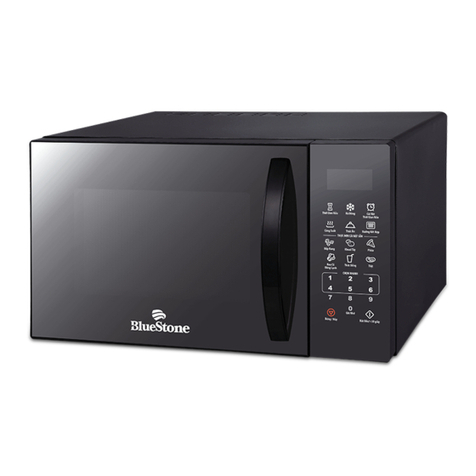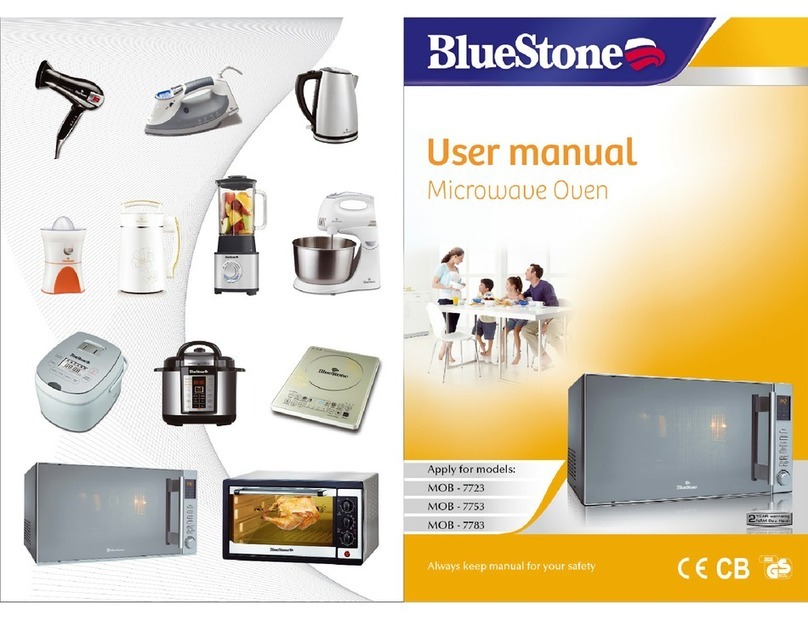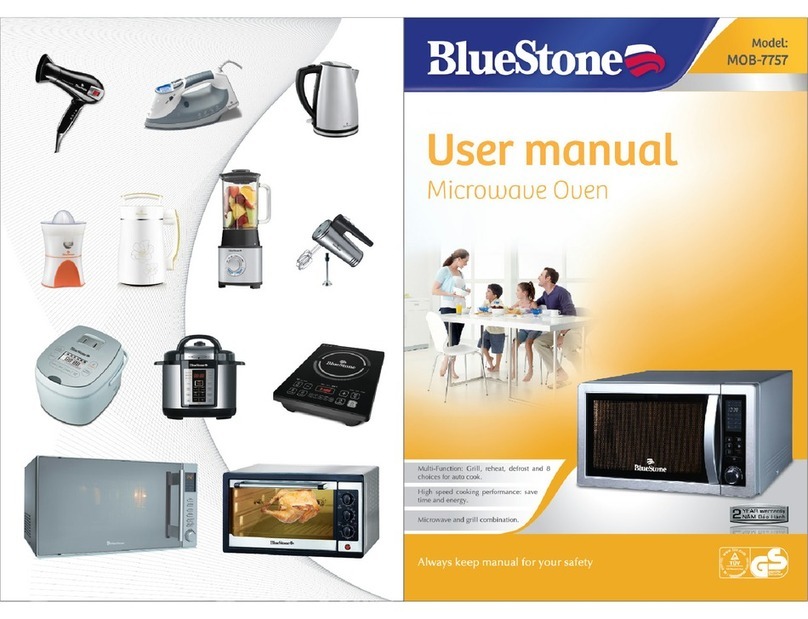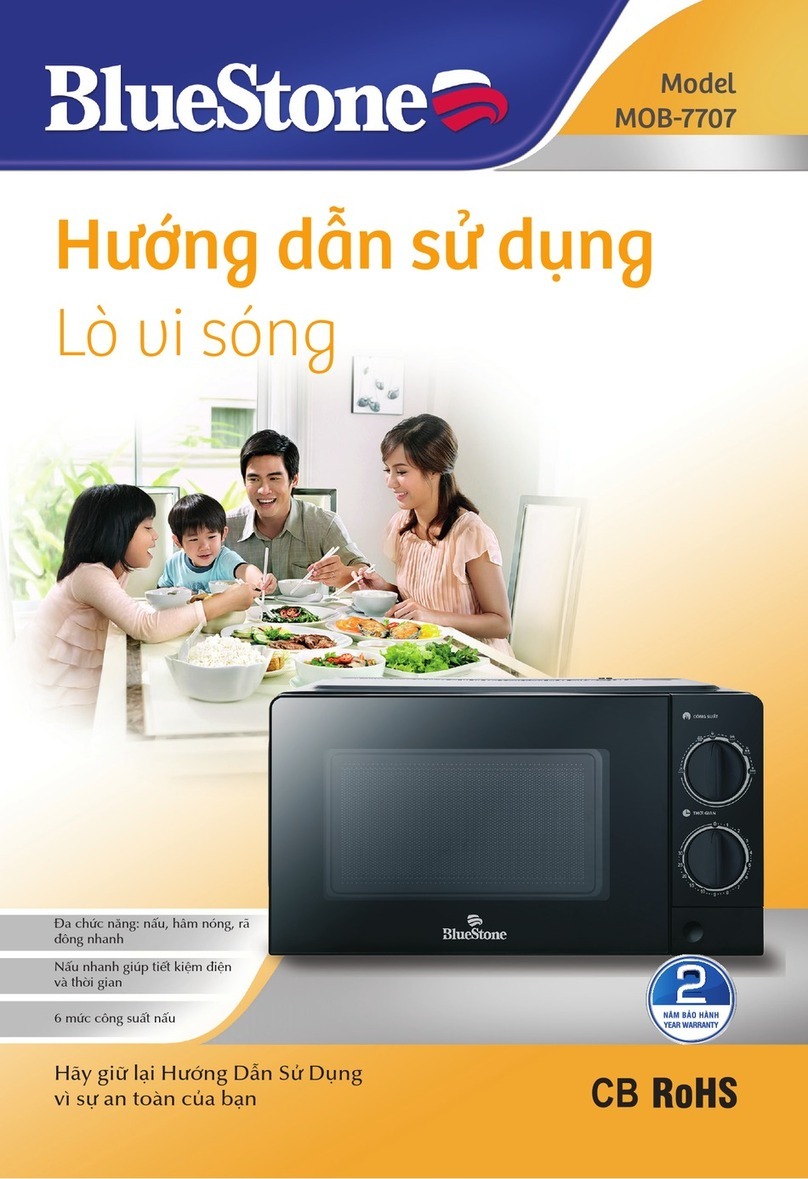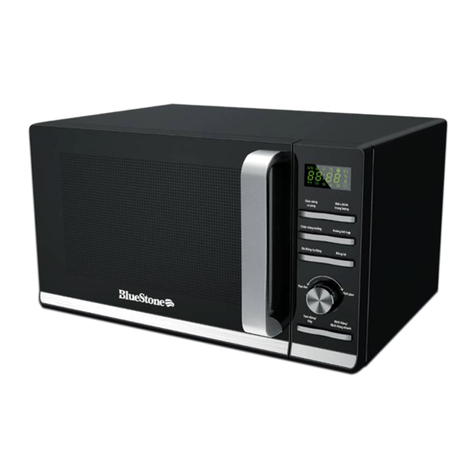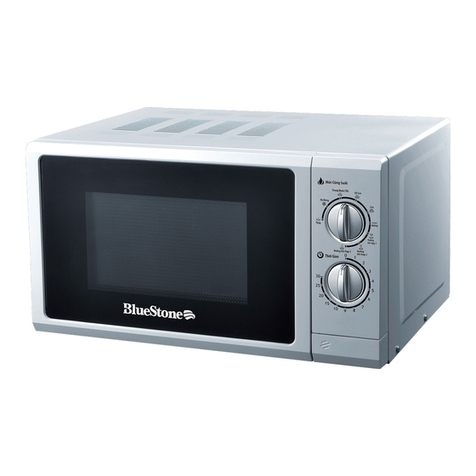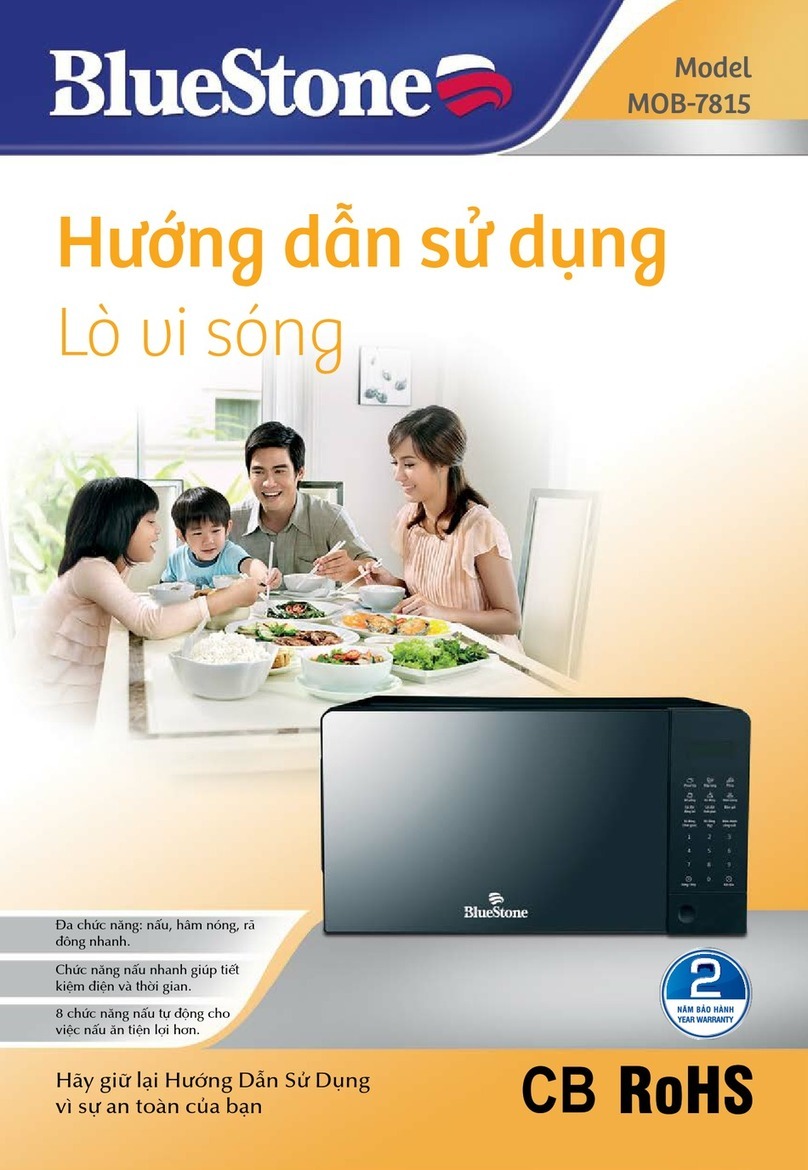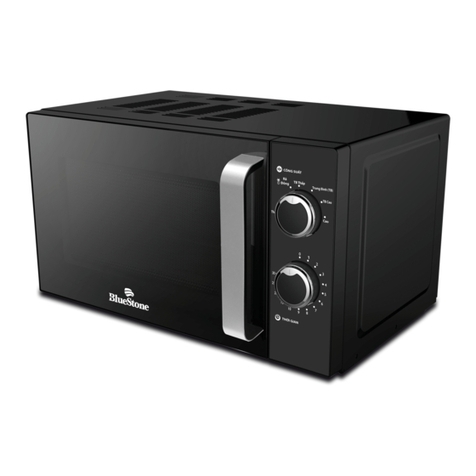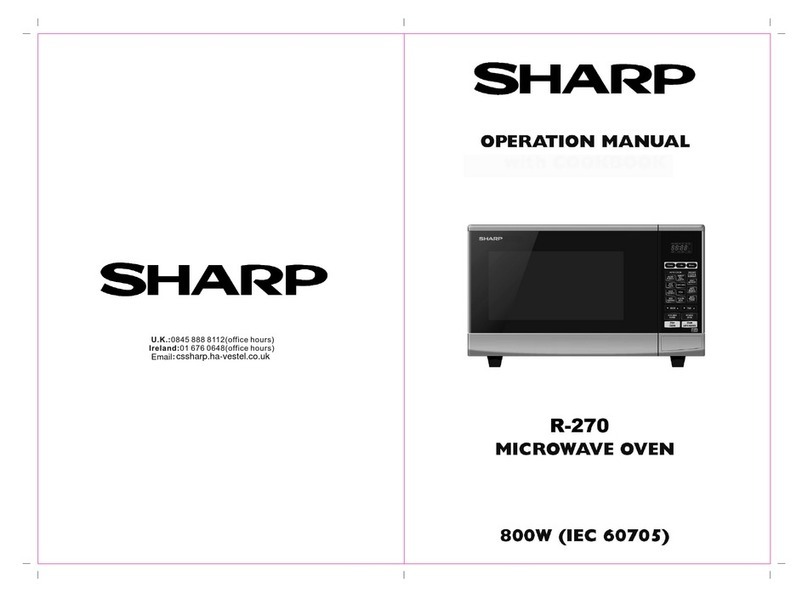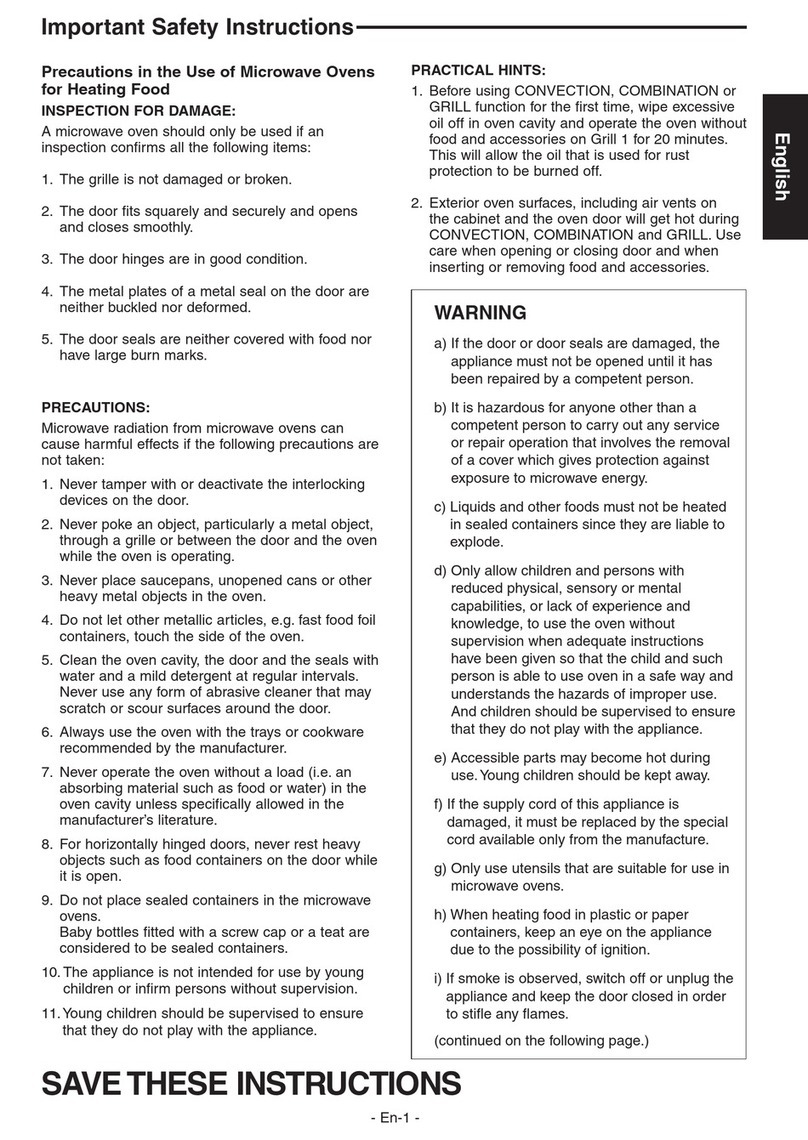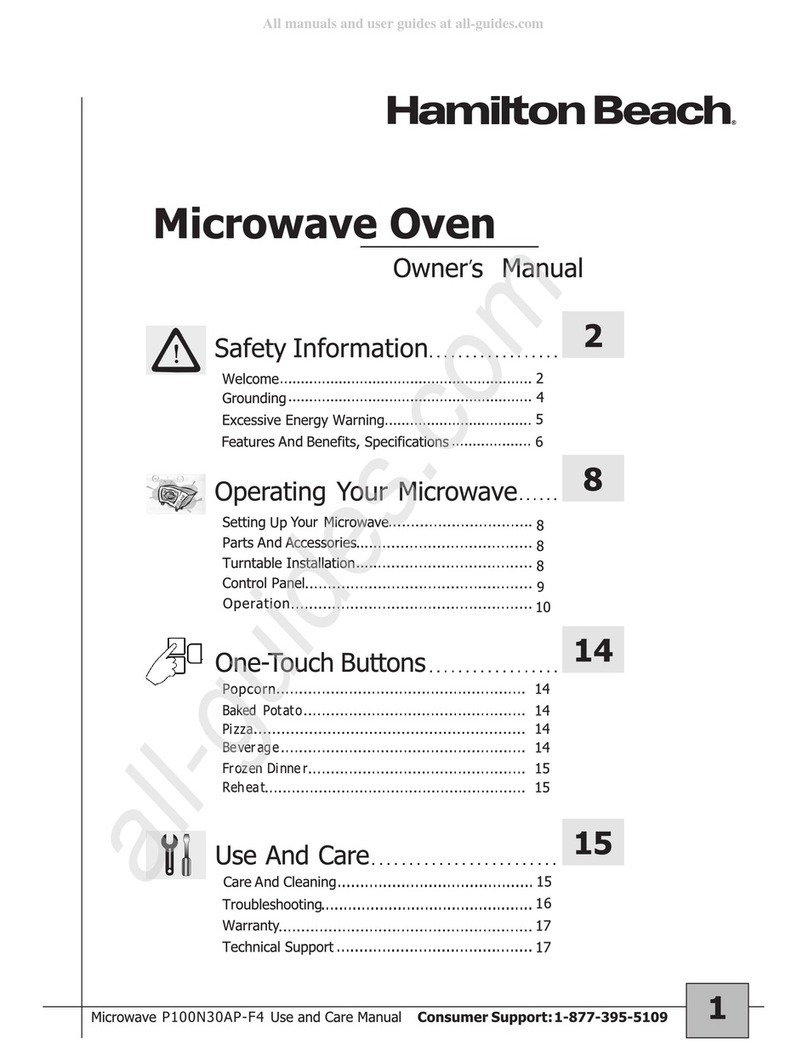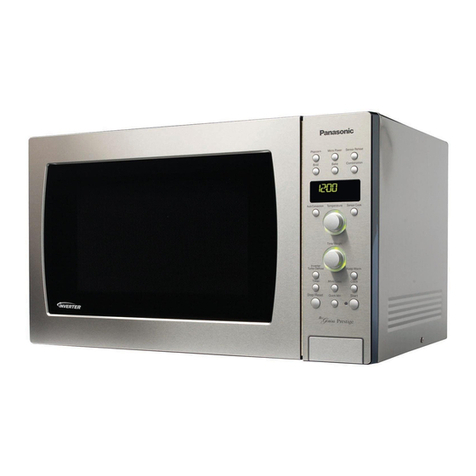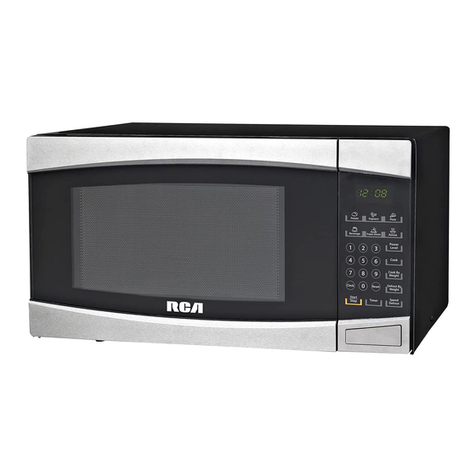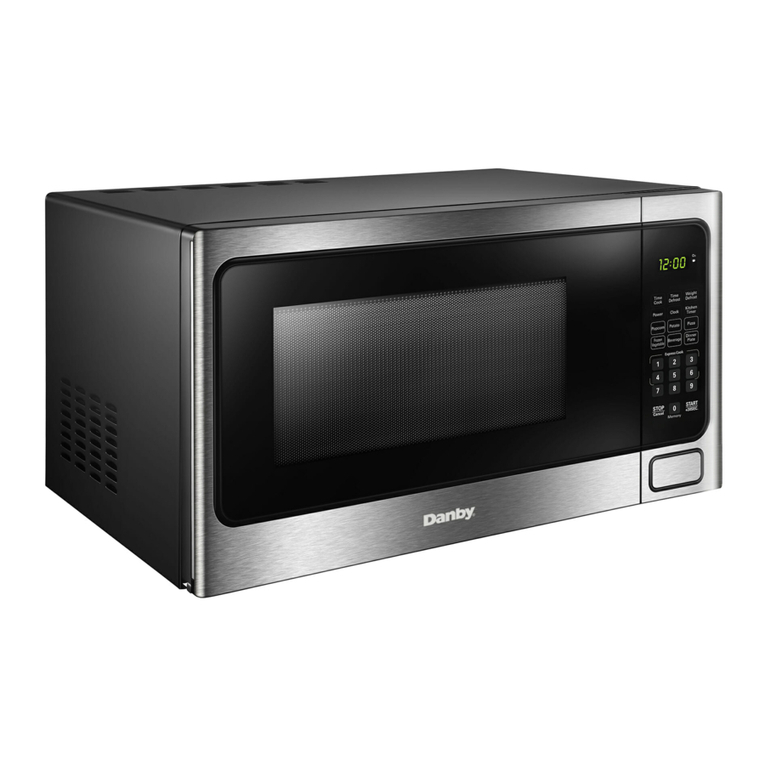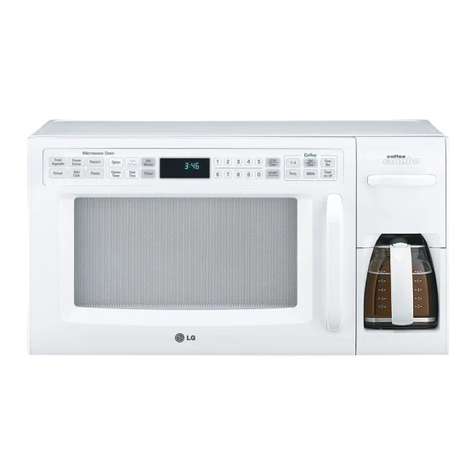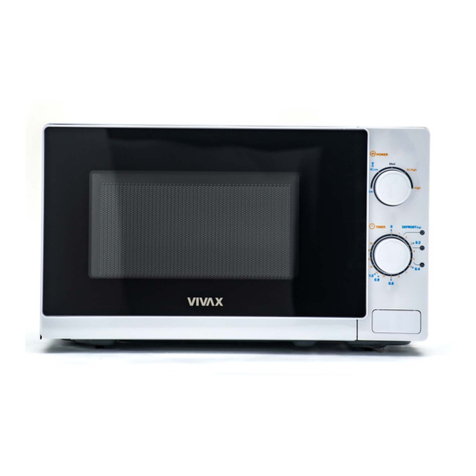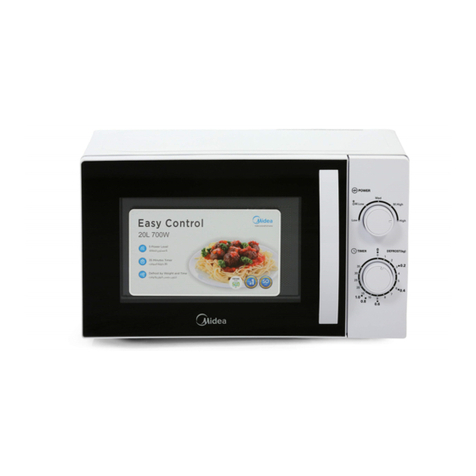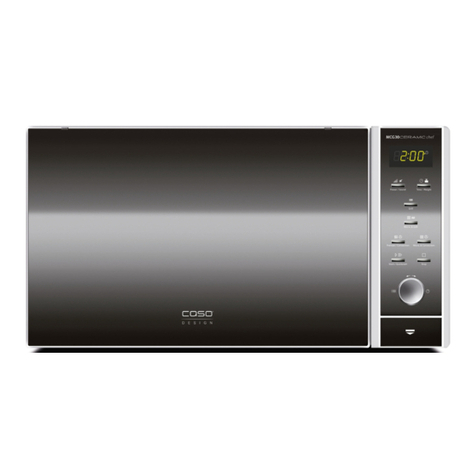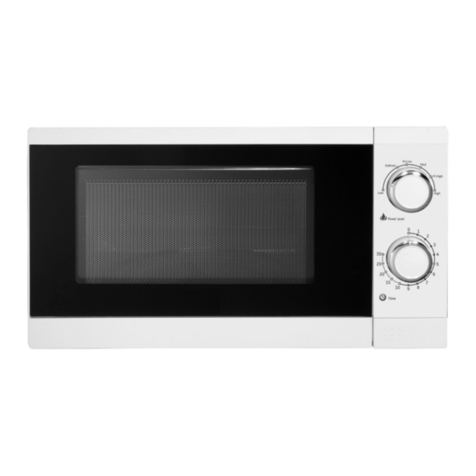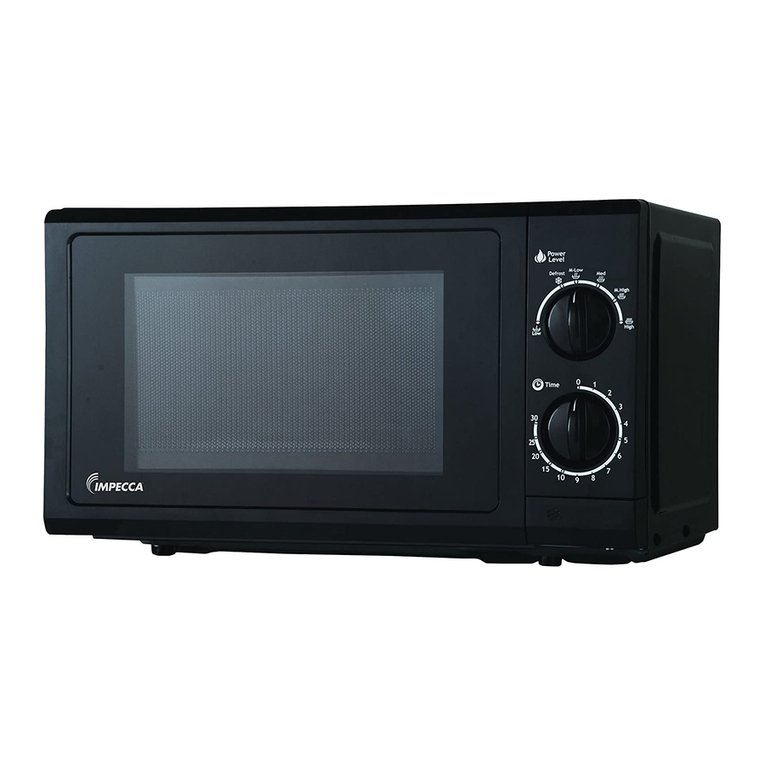
b- Remove wire twist-ties from paper or plastic bags before placing bag in oven.
c- If smoke is observed, switch o or unplug the appliance and keep the door
closed to prevent the ame from spreading.
d- Do not use the oven for storage purposes. Do not leave paper products,
cooking utensils or food in the cavity when not in use.
7Liquid or other food must not be heated in sealed containers since they are
liable to explode.
8Microwave heating of beverage can result in delayed eruptive boiling, therefore
care has to be taken when handling the container.
9Do not fry food in the oven. Hot oil can damage oven parts and utensils and
even result in skin burns.
10 Eggs in their shell and whole hard-boiled eggs should not be heated in microwave
ovens since they may explode even after microwave heating has ended.
11 Pierce foods with heavy skins such as potatoes, whole squashes, apples and
chestnuts before cooking.
12 The contents of feeding bottles and baby jars should be stirred or shaken and
the temperature should be checked before serving in order to avoid burns.
13 Cooking utensils may become hot because of heat transferred from the heated
food. Potholders may be needed to handle the utensil.
14 It is hazardous for anyone other than a trained person to carry out any service
or repair operation which involves the removal of any cover which gives
protection against exposure to microwave energy.
15 This appliance is not intended for use by persons (including children) with
reduced physical, sensory or mental capabilities, or lack of experience and
knowledge, unless they have been given supervision or instruction concerning
use of the appliance by a person responsible for their safety.
16 Children should be supervised to ensure that they do not play with the appliance.
17 Minimum height of free space necessary above the 20 cm top surface of the oven.
18 It’s strongly advise to only use microwave-friendly material for cooking. Only
use utensil that are suitable for use in the microwave oven.
19 When heating food in plastic or paper containers, keep an eye on the oven
due to the possibility of ignition.
20 The oven should be cleaned regularly and any food deposits be regularly
removed.
RADIO INTERFERENCE
IMPORTANT SAFETY INSTRUCTIONS
When using electrical appliance basic safety precautions should be followed, in-
cluding the following.
WARNING: To reduce the risk of burns, electric shock, re, injury to persons or
exposure to excessive microwave energy.
1Read all instructions before using the appliance.
2Use this appliance only for its intended use as described in this manual. Do
not use corrosive and volatile chemical with this appliance. This type of oven
is specically designed to heat, cook or defrost food. It is not designed for
industrial or laboratory use.
3Do not operate the oven when it is empty.
4Do not operate this appliance if it has a damaged cord or plug, unable to
function properly or if it has been damaged or dropped. If the supply cord
is damaged, it must be replaced by the manufacturer, its service agent or a
similarly qualied person in order to avoid a hazard.
5Children should be supervised at all times around the microwave oven while its
operating. When the appliance is operated in the combination mode, children
should only use the oven under adult supervision due to high temperature
generated.
6To reduce the risk of re:
a- When heating food in plastic or paper container, keep an eye on the oven
due to the possibility of ignition.
Operation of the microwave oven can cause interference to your radio, TV, or
similar equipment.
When there is interference, it may be reduced or eliminated by taking the
following measures:
1Clean door and sealing surface of the oven.
2Reorient the receiving antenna of radio or television.
3Relocate the microwave oven with respect to the receiver.
4Move the microwave oven away from the receiver.
5Plug the microwave oven into a dierent outlet so that microwave oven and
receiver are on dierent branch circuits.
6When process nished, everything will back to normal stage.
ENGLISH ENGLISH
2524




















